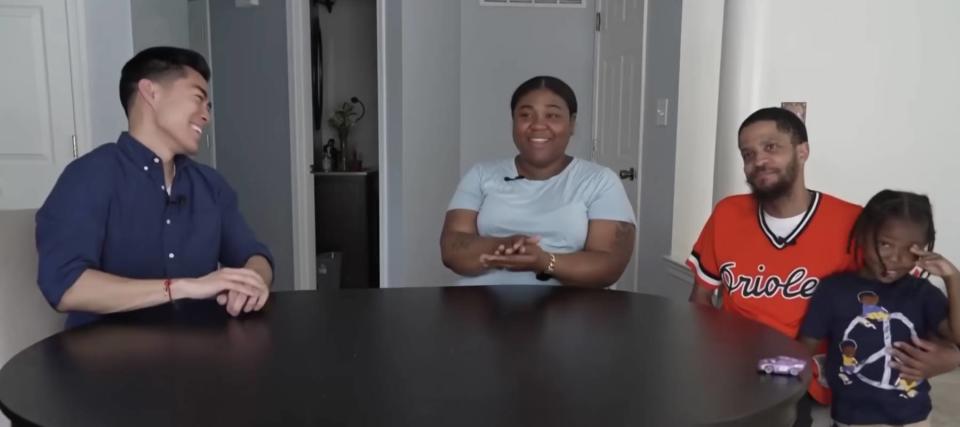Maryland family closes on dream home with a 3.4% mortgage rate — paying $1K a month less than the market rate

With house prices and mortgage rates hovering at painful highs, many Americans have tossed aside their dreams of homeownership — but are they missing a trick?
The Sutton family in Northeast Maryland recently secured their dream home with a mortgage rate of around 3.4% — which was roughly half the average 30-year fixed mortgage rate at the time of purchase.
Don't miss
The 5 most expensive mistakes in options trading and how to avoid them
Car insurance premiums in America are through the roof — and only getting worse. But 5 minutes could have you paying as little as $29/month
These 5 magic money moves will boost you up America's net worth ladder in 2024 — and you can complete each step within minutes. Here's how
How did they beat the home buying odds? They used something called an assumable mortgage — a special type of home loan where the buyer essentially takes over the seller’s mortgage.
The young family shared their story with NBC News. By going down the assumable mortgage route, the Suttons not only managed to avoid the stress and fees associated with qualifying for a conventional mortgage, but they also saved themselves about $1,000 to $1,500 a month by taking on the low interest rate.
Here’s how assumable mortgages work and how to determine if one might be right for you.
What is an assumable mortgage?
An assumable mortgage is a type of home loan where a qualified buyer can take over (or assume) a seller’s mortgage terms, including the existing balance, repayment period and interest rate.
These loans can be appealing for both buyers and sellers, particularly those, like the Suttons, looking to capitalize on lower mortgage rates of the past. But they do also have their limitations and are bound by strict regulations.
Christopher Sutton admitting he’d “never heard of” assumable mortgages before his realtor suggested one is unsurprising.
Assumable mortgages are a relatively niche product today, but they were immensely popular back in the 1980s, when mortgage rates lingered in double-digit territory for years and many lenders (including conventional banks) accepted the practice.
Since then, the majority of lenders have restructured their loan terms (in line with regulatory and market developments) to prohibit the practice. Today, conventional loans are no longer eligible for assumption. They must be paid in full — and a new one issued — whenever a property is sold or transferred to a new owner.
There are three exceptions, where home loans are assumable:
FHA loans: These loans are backed by the Federal Housing Administration and are popular with first-time buyers and those with lower incomes who may not qualify for a conventional loan. Like conventional loans, borrowers still have to qualify under all FHA terms, including credit and employment standards.
USDA loans: These loans are intended for low-income borrowers in rural areas. They’re backed by the U.S. Department of Agriculture and don’t require any down payment.
VA loans: These loans are offered to active or retired members of the U.S. military.
The Suttons assumed an FHA loan in order to secure their dream home in Maryland.
Read more: ‘You didn’t want to risk it’: 80-year-old woman from South Carolina is looking for the safest place for her family’s $250,000 savings. Dave Ramsey responds
Things to be wary of
To successfully assume someone else’s mortgage, you need to cover all of the equity already built up in the house. So, if the seller bought the home for $200,000 and paid off $50,000 in principal, the buyer would have to bring $50,000 to the table (a bit like a down payment) and qualify to assume the remaining mortgage.
This worked out for the Suttons because the previous owner of the house had only made about 18 months of mortgage payments before relocating to Florida for work, meaning they had not built up a ton of equity that the Suttons would have to match.
“It was just one more of those stars that had to align for this to work,” the family’s realtor, John Gatsoulas from REMAX, told NBC News.
It’s also important to consider the property value before assuming a mortgage. If the home has appreciated significantly since the seller first bought it, the original home loan that you assume may not cover your costs.
So, if you assume a mortgage for $350,000, but the house is now worth $500,000, you’ll need to pay the $150,000 difference out of pocket. You may be able to secure financing to cover that cost, but second mortgages are typically expensive, hard to qualify for and not really suitable for families, like the Suttons, seeking assumable mortgages for their affordability.
What to read next
Car insurance rates have spiked in the US to a stunning $2,150/year — but you can be smarter than that. Here's how you can save yourself as much as $820 annually in minutes (it's 100% free)
Thanks to Jeff Bezos, you can now use $100 to cash in on prime real estate — without the headache of being a landlord. Here's how
'It's not taxed at all': Warren Buffett shares the 'best investment' you can make when battling rising costs — take advantage today
This article provides information only and should not be construed as advice. It is provided without warranty of any kind.

 Yahoo Finance
Yahoo Finance 